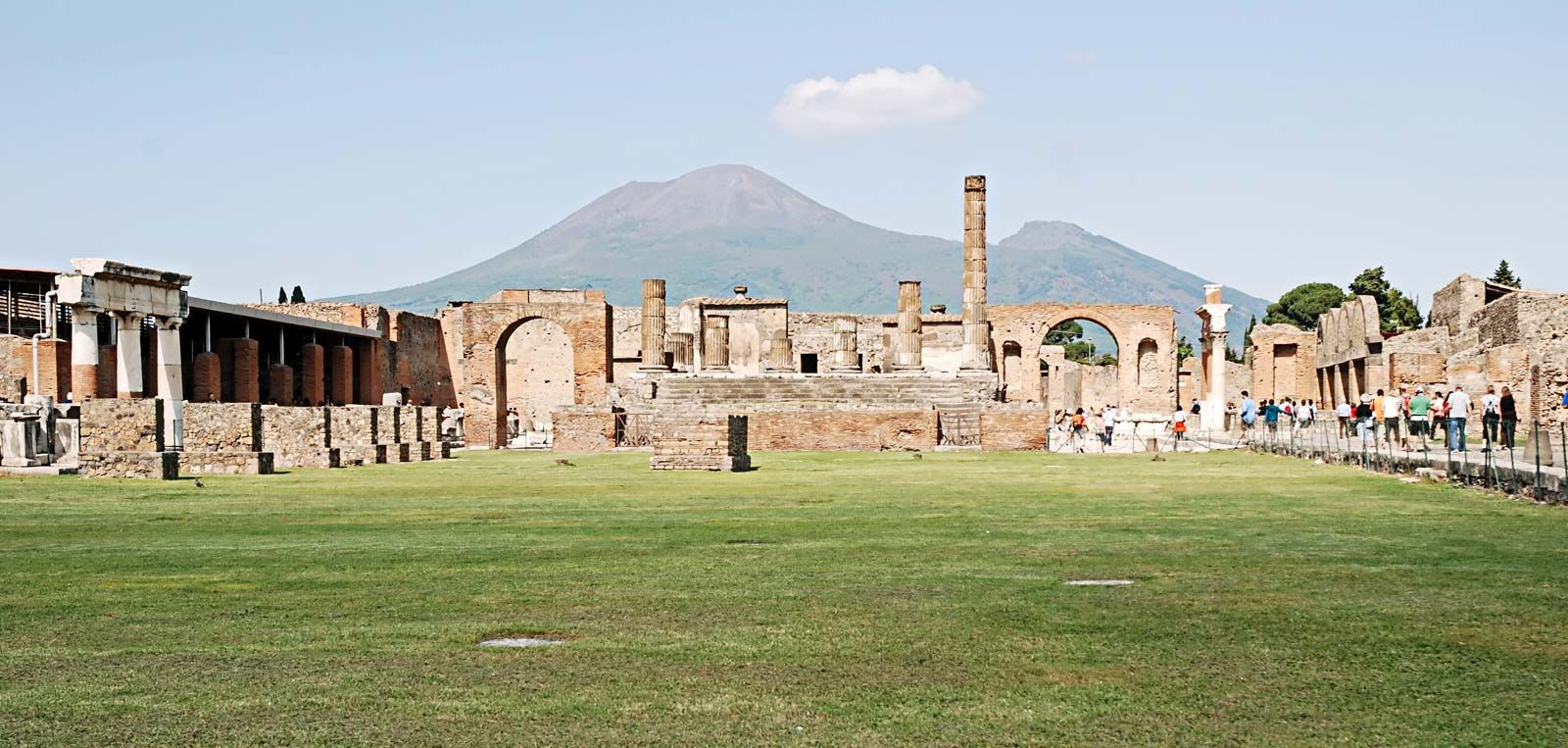Pompeii, a name that echoes through history, conjures vivid images of a bustling Roman city frozen in time. But where is Pompeii exactly? This ancient city, famed for its tragic demise and remarkable preservation, isn’t just a myth; it’s a real place with a precise location that continues to draw millions of visitors each year.
Pompeii is situated in Italy, specifically in the region of Campania. To pinpoint it further, Pompeii lies approximately 14 miles (23 kilometers) southeast of Naples, a major Italian city and a vibrant hub of culture and history. Geographically, Pompeii is nestled at the southeastern base of the imposing Mount Vesuvius. This proximity to the volcano is, of course, central to Pompeii’s story and its current state of preservation. Built on a spur of land formed by ancient lava flows, Pompeii was strategically positioned north of the mouth of the Sarnus River (now known as the Sarno River), a location that contributed to its early prosperity and later, its vulnerability.
 Mount Vesuvius and Pompeii
Mount Vesuvius and Pompeii
The Geographical Context of Pompeii
Understanding where Pompeii is involves more than just naming a country and city. The geographical context is crucial to grasping its history and fate. Located in the fertile Campania region, Pompeii benefited from rich volcanic soil and a strategic position for trade and commerce. Its proximity to the Sarnus River provided access to the sea, further enhancing its economic importance in the ancient Roman world.
The shadow of Mount Vesuvius, however, loomed large, quite literally. While the volcano provided fertile land and scenic views, it also held the potential for catastrophic destruction. In 79 AD, this potential became reality when Vesuvius erupted with devastating force, burying Pompeii and its neighboring cities under layers of ash and pumice.
Pompeii’s History and its Place in Time
Pompeii’s history stretches back long before the dramatic eruption. Initially settled by Oscan-speaking people, the area soon felt the influence of Greek culture, followed by the Etruscans. By the 5th century BCE, the Samnites, an Italic tribe, had taken control, and Pompeii, along with Herculaneum and Stabiae, became Samnite towns.
Pompeii enters recorded history in 310 BCE, mentioned in connection with the Second Samnite War. Eventually, the region became part of the Roman confederation, and Pompeii gradually Romanized after the Social War, adopting Latin language, Roman institutions, architecture, and culture.
This thriving Roman city was not unfamiliar with seismic activity. A significant earthquake in 62 AD caused considerable damage to Pompeii and Herculaneum. However, the repairs and rebuilding were cut short by the cataclysmic eruption of Mount Vesuvius just 17 years later.
 Pompeii
Pompeii
The Eruption and Preservation of Pompeii
The eruption of Mount Vesuvius in 79 AD is the defining moment in Pompeii’s history. Beginning around midday on August 24th, the eruption rained down ash and pumice on Pompeii, quickly burying the city. Pyroclastic flows followed the next day, sealing the city and its inhabitants in a tomb of volcanic debris.
This catastrophic event, while tragic, paradoxically became Pompeii’s preservation. The thick layers of ash and pumice acted as a time capsule, protecting the city from the elements and the ravages of time for over 17 centuries. When Pompeii was rediscovered in the 18th century, it emerged as an incredibly well-preserved snapshot of ancient Roman life.
Visiting Pompeii Today: Stepping Back in Time
Today, Pompeii is a UNESCO World Heritage site and one of Italy’s most visited tourist attractions. Located near the modern town of Pompei, the archaeological site offers an unparalleled glimpse into the daily life of an ancient Roman city.
Visitors to Pompeii can walk through the ancient streets, explore remarkably preserved houses, public buildings, shops, and even bathhouses. The casts of the eruption’s victims, frozen in their final moments, are a poignant reminder of the tragedy that struck the city. The ruins stand against the backdrop of Mount Vesuvius, a constant reminder of the forces that shaped Pompeii’s destiny.
 Pompeii
Pompeii
Conclusion: Pompeii’s Enduring Location and Legacy
So, where is Pompeii? It is in Italy, in the Campania region, near Naples, at the foot of Mount Vesuvius. But more than just a geographical location, Pompeii is a place in time. Its unique preservation allows us to step back nearly two millennia and experience a Roman city as it was on the cusp of unimaginable disaster. The location of Pompeii, both geographically and historically, is fundamental to its identity and its enduring fascination for people around the world. It is a place where history is not just read in books, but walked through and experienced firsthand.
